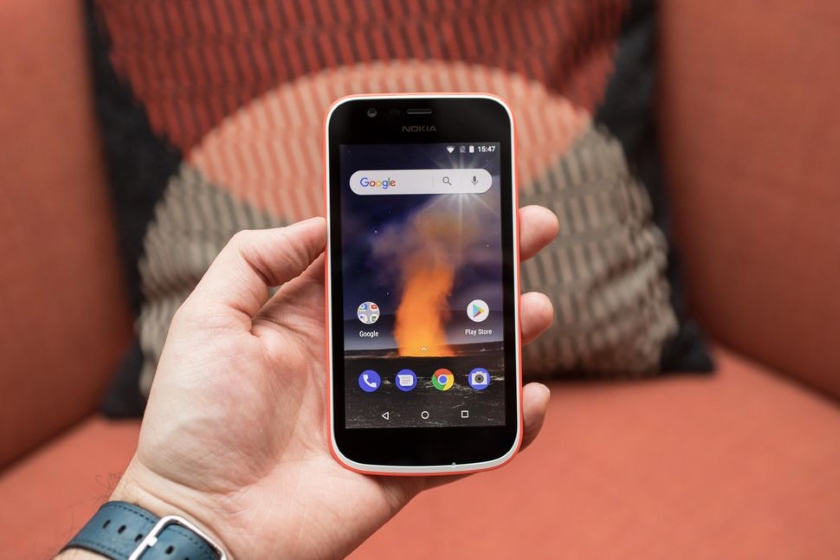Media Go is an application, with a section very similar to iTunes, from which we can buy and manage movies, music, TV series, pictures, podcasts, and videogames, but exclusively Sony products. As of end December 2017, downloading the Media Go application will no longer be possible. The Music Center for PC app is available since August 2017, and offers enhanced support for your WALKMAN® device(s) and Hi-Res Audio compatible products, thanks to an easy file management system as well as Hi-Res Audio playback capability. If you own such devices, we invite you to download and use Music. Media Go allows you to easily transfer music, photos, videos, and other media between your computer and some great mobile devices, including the PSP system, WALKMAN, Sony Tablet, Xperia. Turning your Android device into the place to play your media is harder than it looks. In this roundup, we'll look at the best Android media center apps!
Media Go by Sony is a comprehensive and extensive media management program which offers not just cataloging capability for your media, but also media editing tools which help you optimize and convert your media. Media Go supports both video and audio.
Sony bills the program as fully capable of managing television series, podcasts, games and even comics.
The interface of this application comes packed with many different features which may come in handy for a number of users. The interface is very self-explanatory and miles ahead of anything Sony has created in this field yet (think SonicStage).
Beyond the core function of acting as an overall media player and library management utility, Media Go offers many surprising tools like video cropping and trimming, image conversion utilities, a photo editor and more.
/cdn.vox-cdn.com/uploads/chorus_image/image/50033661/pokemon-go-nick_statt-2016-7.0.0.jpg)

The main media library of Media Go is simple to setup. If you're currently an iTunes user, you can also direct Media Go to scan your iTunes library and import all of your data from iTunes to Media Go.
In conclusion, Media Go offers a lot more than what you may expect from a piece of Sony software and it surpasses much of what Apple has attempted with their bloated iTunes software.
Features and highlights
- Enjoy additional high-resolution audio formats, including FLAC uncompressed and DSD 5.6 MHz files
- Enjoy closed-captioning improvements for media purchased from the Store
- Interact with your panoramic photos more easily
- Use Media Go with a growing list of supported devices
- Quickly find, tag, and sort content
- Create new playlists with music or video
- Organize photos into albums and enjoy full-screen slideshows on your computer
Media Go 2.9a on 32-bit and 64-bit PCs
This download is licensed as freeware for the Windows (32-bit and 64-bit) operating system on a laptop or desktop PC from media players without restrictions. Media Go 2.9a is available to all software users as a free download for Windows.
Filed under:- Media Go Download
- Freeware Media Players
- Multimedia Management Software
Bluestacks setup 1 click sync. Android includes Stagefright, a media playback engine at the native levelthat has built-in software-based codecs for popular media formats.
Stagefright audio and video playback features include integration withOpenMAX codecs, session management, time-synchronized rendering, transportcontrol, and DRM.
Stagefright also supports integration with custom hardware codecs provided byyou. To set a hardware path to encode and decode media, you must implement ahardware-based codec as an OpenMax IL (Integration Layer) component.
Android Media Player Reviews
Note: Stagefright updates can occur through theAndroid monthly securityupdate process and as part of an Android OS release.
Media Go Android Phone
Architecture
Portable data storage devices for computers. Media applications interact with the Android native multimedia frameworkaccording to the following architecture.
Figure 1. Mediaarchitecture Bluestacks 3 osx.
- Application Framework
- At the application framework level is application code that utilizesandroid.mediaAPIs to interact with the multimedia hardware.
- Binder IPC
- The Binder IPC proxies facilitate communication over process boundaries.They are located in the
frameworks/av/media/libmediadirectory andbegin with the letter 'I'. - Native Multimedia Framework
- At the native level, Android provides a multimedia framework that utilizesthe Stagefright engine for audio and video recording and playback. Stagefrightcomes with a default list of supported software codecs and you can implementyour own hardware codec by using the OpenMax integration layer standard. Formore implementation details, see the MediaPlayer and Stagefright componentslocated in
frameworks/av/media. - OpenMAX Integration Layer (IL)
- The OpenMAX IL provides a standardized way for Stagefright to recognize anduse custom hardware-based multimedia codecs called components. You must providean OpenMAX plugin in the form of a shared library named
libstagefrighthw.so. This plugin links Stagefright with your customcodec components, which must be implemented according to the OpenMAX ILcomponent standard.
Android Media Box
Implementing custom codecs
Stagefright comes with built-in software codecs for common media formats, butyou can also add your own custom hardware codecs as OpenMAX components. To dothis, you must create the OMX components and an OMX plugin that hooks togetheryour custom codecs with the Stagefright framework. For example components, seethe hardware/ti/omap4xxx/domx/; for an example plugin for theGalaxy Nexus, see hardware/ti/omap4xx/libstagefrighthw.
To add your own codecs:
- Create your components according to the OpenMAX IL component standard. Thecomponent interface is located in the
frameworks/native/include/media/OpenMAX/OMX_Component.hfile. Tolearn more about the OpenMAX IL specification, refer to theOpenMAX website. - Create a OpenMAX plugin that links your components with the Stagefrightservice. For the interfaces to create the plugin, see
frameworks/native/include/media/hardware/OMXPluginBase.handHardwareAPI.hheader files. - Build your plugin as a shared library with the name
libstagefrighthw.soin your product Makefile. For example:In your device's Makefile, ensure you declare the module as a productpackage:
Exposing codecs to the framework
The Stagefright service parses the system/etc/media_codecs.xmland system/etc/media_profiles.xml to expose the supported codecsand profiles on the device to app developers via theandroid.media.MediaCodecList andandroid.media.CamcorderProfile classes. You must create both filesin the device/// directoryand copy this over to the system image's system/etc directory inyour device's Makefile. For example:
Android Media Player App
For complete examples, see device/samsung/tuna/media_codecs.xmland device/samsung/tuna/media_profiles.xml .
Note: As of Android 4.1, the element for media codecs is no longer supported.

